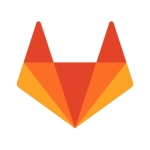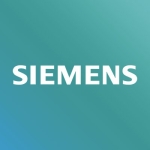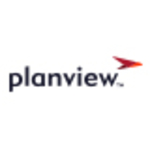How has it helped my organization?
Previously, we had an in-house solution that was very difficult to update and customize. Thus, when we had acquired new businesses that we were working with, we weren't able to add the right type of information that we needed or get the right type of support and customers. We weren't recording half of all our new work that was coming in through my team because we couldn't do it. So, when we started using CA Agile Central, those changes could be made in a day or two and we had better data integrity, than my team had ever had before.
What is most valuable?
Since we went through a series of work changes in the last two years, the most valuable feature is how easy it is to customize it. The ability to customize and change the processes really quickly, so as to respond to what the changes of the organization and processes, were the most helpful.
What needs improvement?
It takes a very long time to load and, if you make some small changes, then the whole page has to reload. I know that's a major frustration for a lot of people using the tool.
I know that they're constantly updating and providing new features. As I have mentioned elsewhere, I set it up for two different teams. By using it in it's most standard and straightforward route, it is definitely a ten out of ten. However, working at the portfolio feature level, which is what my main team did, there were some functionalities that were missing and over the last two years, I've seen more and more of it come along the way. I would have liked to have the same development support at the portfolio feature level as well, that I was seeing at the user story level.
What do I think about the stability of the solution?
We are facing some stability issues. This is a pretty regular occurrence, especially when using custom reports.
Buyer's Guide
Rally Software
September 2025
Learn what your peers think about Rally Software. Get advice and tips from experienced pros sharing their opinions. Updated: September 2025.
870,697 professionals have used our research since 2012.
What do I think about the scalability of the solution?
I've not necessarily put the scalability factor to test yet, but the nice thing is once you have a small handful of people using it, the number of people and information in it has tripled over the last couple of years. So, it was scalable for us in that sense and then, also in terms of the number and diversity of customers, as I mentioned. It's been good in the sense, that we've needed it but I don't think we've really put it to the test.
How are customer service and support?
I had a question when looking into custom scrums and I think, the overall community for CA Agile Central is incredible. Not only does our organization have people here, but there's a wealth of information online as well. When we reached out for technical support via the CA Agile Central team at our organization, when we had some particular requests, they were absolutely incredible. We really liked the tool because it's really easy to learn and there's a really good community.
Which solution did I use previously and why did I switch?
As I have mentioned eslewhere, we had an in-house solution and before that, it was all managed via Excel spreadsheets. Excel was the worst of it all. The in-house solution was only good enough maybe for the first couple of months, until one or two or more changes came along, that we couldn't afford to keep up with. That's definitely one of the main reasons as to why we switched, since we couldn't keep up with the updates. If we say that CA Agile has stability issues, that again are not poor, but it just takes a while to load, then, our in-house tool was significantly worse.
How was the initial setup?
I thought that the setup was very straightforward, but we also had people on the side of our organization, i.e., a dedicated team, to help get everything set up smoothly. My team intended to change a few things about how you would traditionally use the product. I set it up for two different teams. When I used everything in the straightforward way, it was very easy. When we were modifying and customizing some things for my team, then it got a bit more complicated; just to get my head around the rules and then, having to manipulate them. So, the setup is very easy when the product is being used as it's meant to. When we were manipulating things, it got a little more complex. However, we were able to work through it relatively easily, because of the support that we had.
Which other solutions did I evaluate?
I evaluated about half a dozen of the other vendors out there and one of them was JIRA, for portfolio management. JIRA was the other top competitor, although we did evaluate other small vendors as well. CA Agile Central was much better. We actually had a relationship on JIRA's side, but I was the first one to venture into the CA side, as we didn't have the relationship in my team. However, CA Agile was just a far more superior product, as compared to what JIRA was able to offer then.
What other advice do I have?
It is important to truly understand it! In order to use it the best way that you can, you really have to understand your process, terminology and the way that CA Agile Central is meant to be used. We had a lot of issues with the terminology; for example, at what level should we be, does this count as a user story, does this count as a feature, etc. So, it is crucial to really do all that work in the beginning and to map out everything meticulously, so as to make sure that the definitions are clear. After that, setting up of the process becomes much easier; but, if there's a lot of back-and-forth in terms of the definition, the setup and adoption will be much more difficult.
Disclosure: PeerSpot contacted the reviewer to collect the review and to validate authenticity. The reviewer was referred by the vendor, but the review is not subject to editing or approval by the vendor.













Thanks for the information!